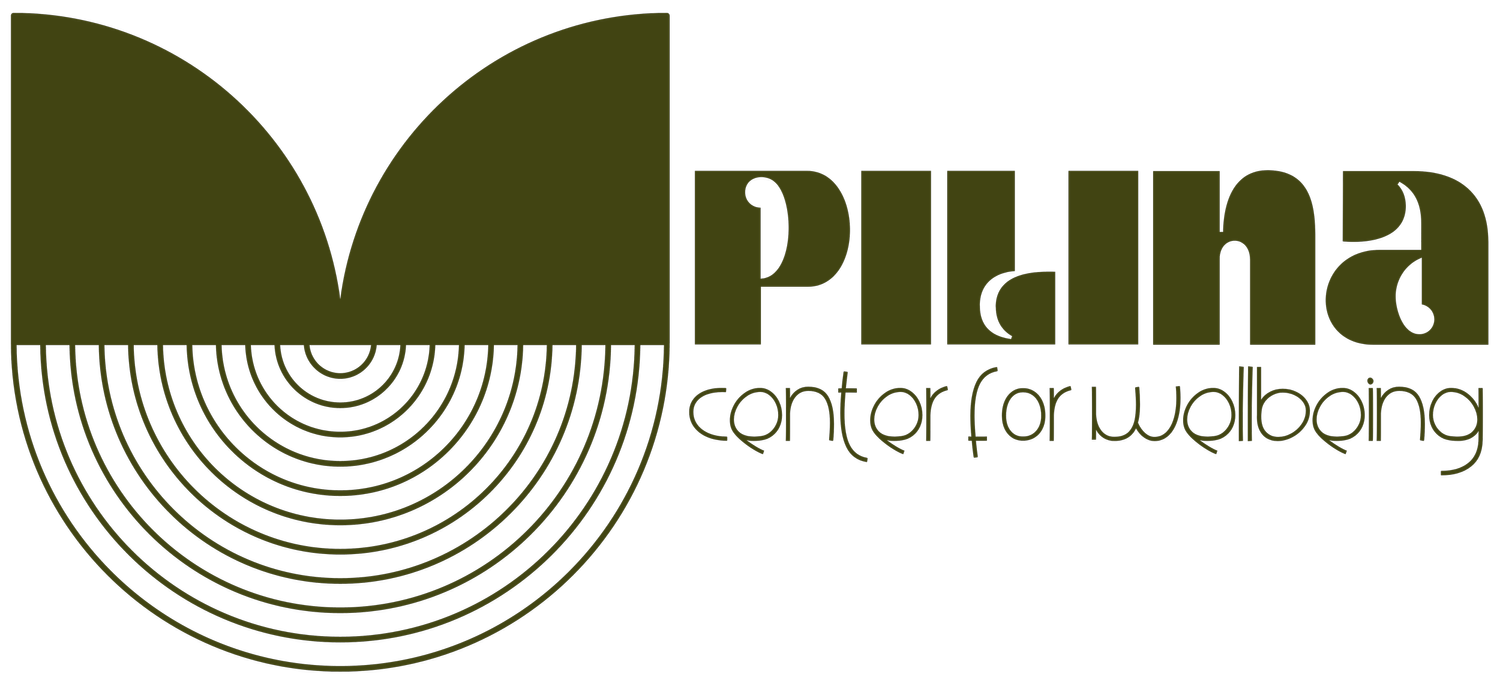Stupski Grantees Develop Wellbeing Model for Thriving Futures in Hawai`i
This year, the Stupski Foundation hosted two multi-day convenings for a cohort of grantees committed to reimagining wellbeing in their communities. Pilina Center for Wellbeing was invited to co-create a multi-level wellbeing model rooted in organizational values, community voice, and practical application with Epic ʻOhana, Ka Pouhana Mentoring Program, Kauaʻi Creative Technology Center, Mental Health America of Hawaiʻi, Waimea High School, and Wisdom Circles Oceania.
Convening One: Building Foundations
The first convening focused on reflection, inspiration, and discovery. Grounding wellness practices opened each day, creating space for participants to arrive fully. The group explored existing wellbeing models in a gallery walk, sparking dialogue about what might resonate locally. Through journaling and small-group sketching sessions, participants began deciding whether to develop a cohort-wide framework or organization-specific models. Pilina Center also led breathwork, visualizations, progressive muscle relaxation, and Yoga sessions for the attendees in between workshop sessions.
Day two emphasized refinement and peer feedback. Each organization shared overnight reflections, then revisited their emerging models to incorporate early indicators of wellbeing. Another gallery walk allowed participants to offer constructive input before the group closed with a wellness session to integrate insights.
Waimea High School working on their HĀ-based project
Convening Two: The Next Iteration of the Model, Indicators, and Measures
The second two-day convening built on our strong foundation together. Ahead of the gathering, participants were given light-touch assignments to refine values and ensure a shared baseline while honoring the diversity of perspectives. During the convening, facilitators guided participants through hands-on activities to refine their model, define indicators and measures that reflected their values, and begin envisioning how the model could be applied in daily practice. The approach was deliberately balanced: shared learning across the cohort alongside time for organization-specific design.
Our role was not to prescribe a single solution, instead, we stewarded a process that helped organizations uncover and articulate what wellbeing looks like for them—whether that meant centering family values, belonging, the aloha spirit, or collectivism. - Jo & Wendy
Throughout, Pilina Center emphasized ecological and culturally grounded facilitation—beginning each session with grounding experiences, calling in inspiration and guidance, and creating spaces for authentic voice, highlighting the importance of pilina (relationship) as the connective thread of wellbeing.
Kehau presenting on trans-org values
Navigating Forward
By the close of the convenings, the wellbeing model was fully formed, along with values defined, indicators identified, and measures developed. Pilina Center provided some guidance on best practices in implementation before wrapping up the workshop with a share out from each org.
Follow-up technical assistance ensured these tools would not remain abstract, but instead could guide internal planning, program design, evaluation, and community engagement.
The convenings demonstrated that while each organization’s vision of wellbeing is unique, they share a commitment to creating environments where people feel seen, valued, and supported. Like the braiding of pili grass, the collective learning strengthened each strand while weaving something greater together. For Pilina Center for Wellbeing, this work exemplifies its mission: to serve as a steward and facilitator of collective healing, guided by relationships, values, and the lived experiences of communities. Together with Stupski grantees, the Center is helping to weave a healthier, more connected future for Hawaiʻi.
Second convening at House of Savon



